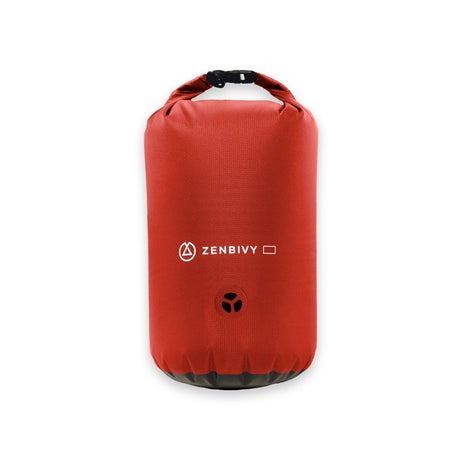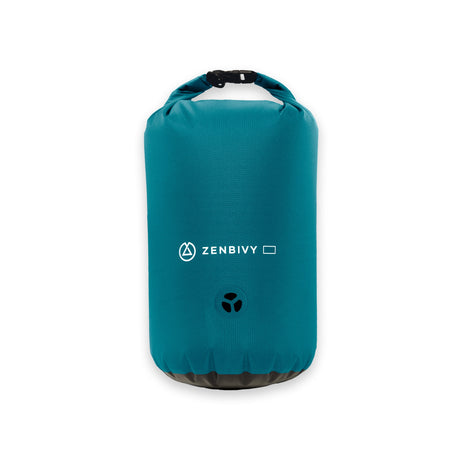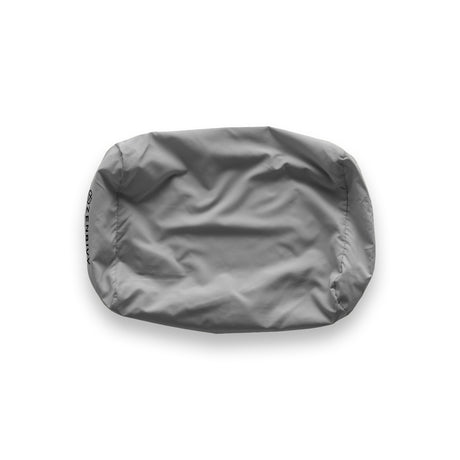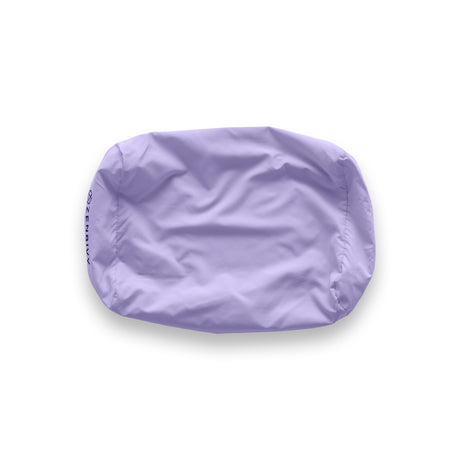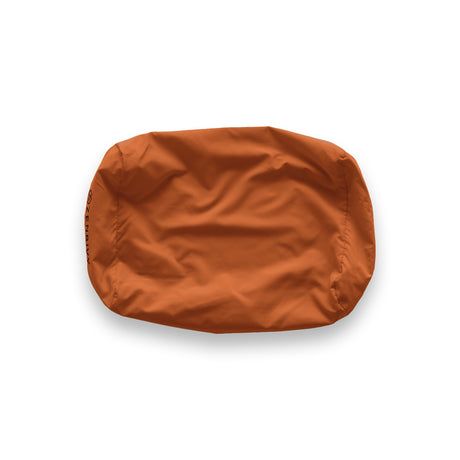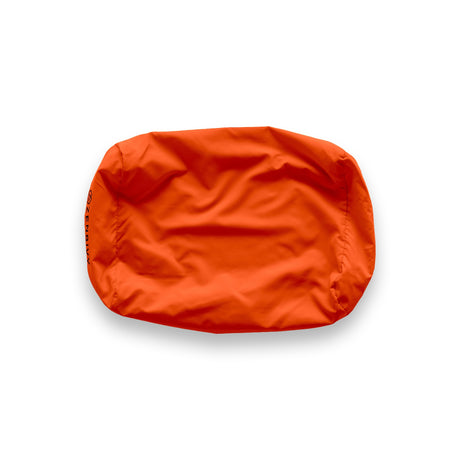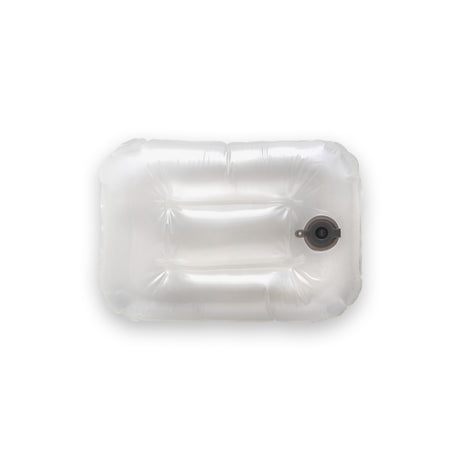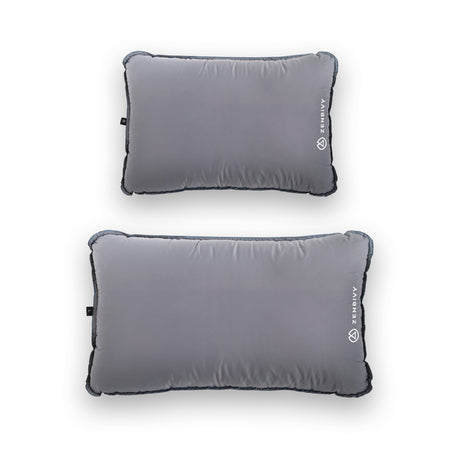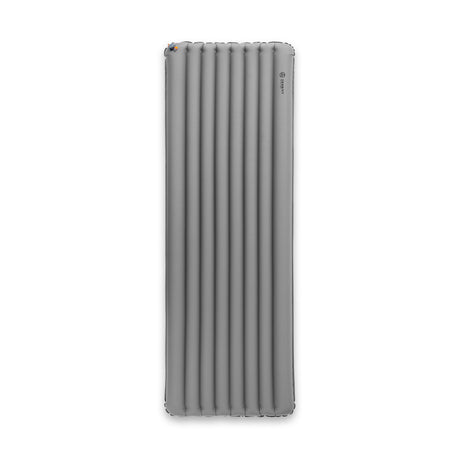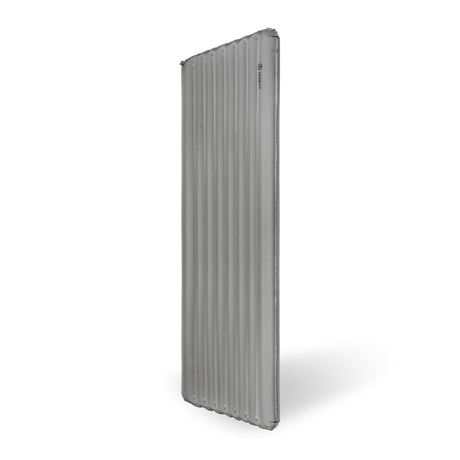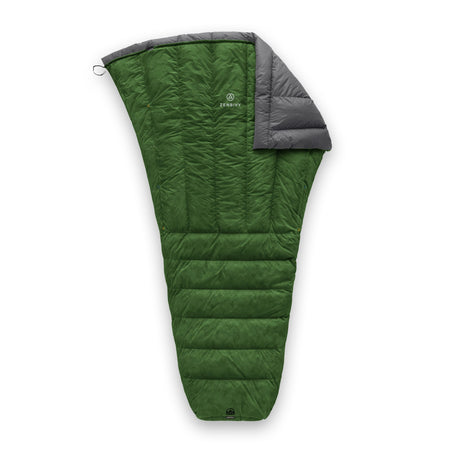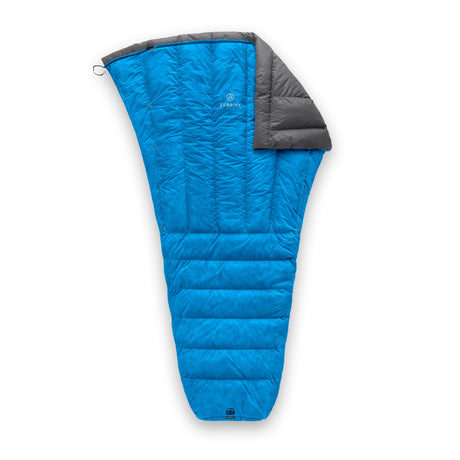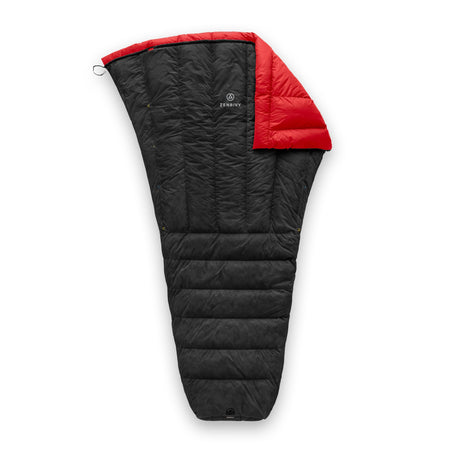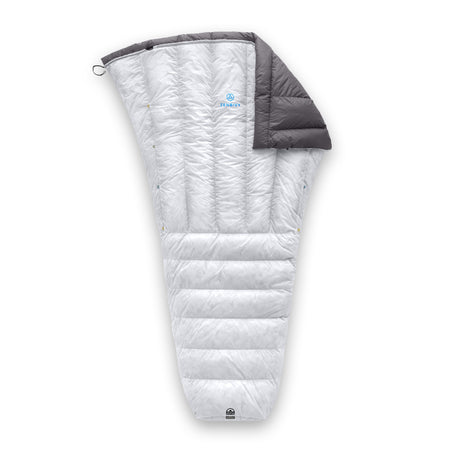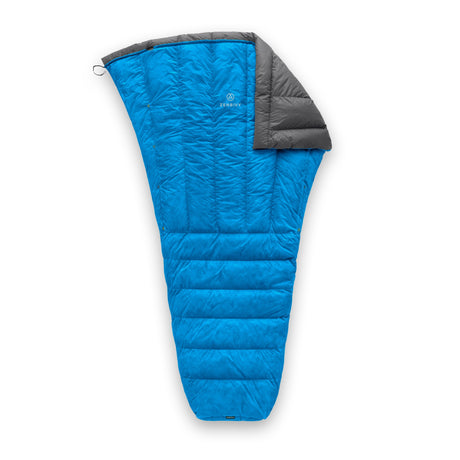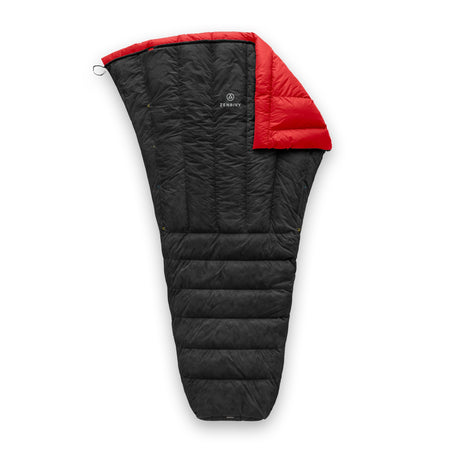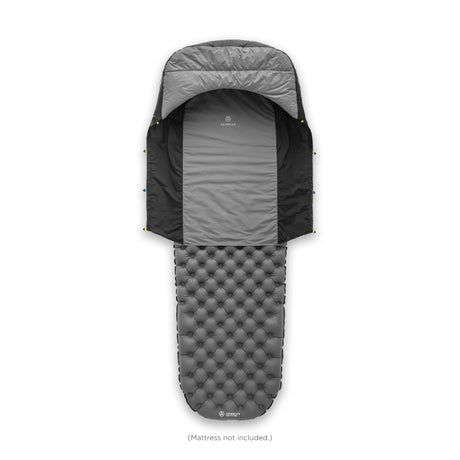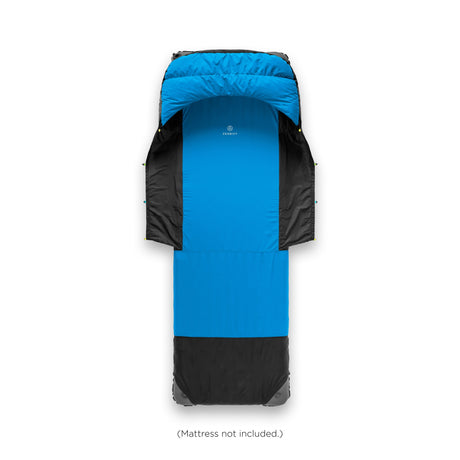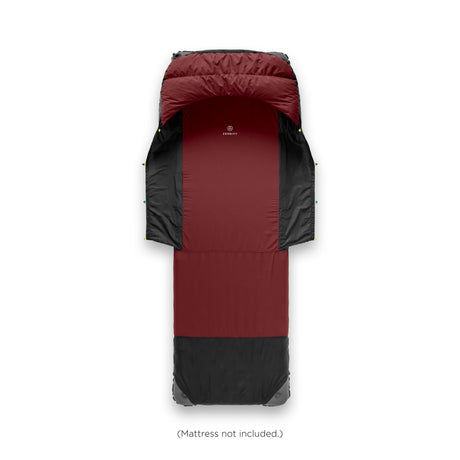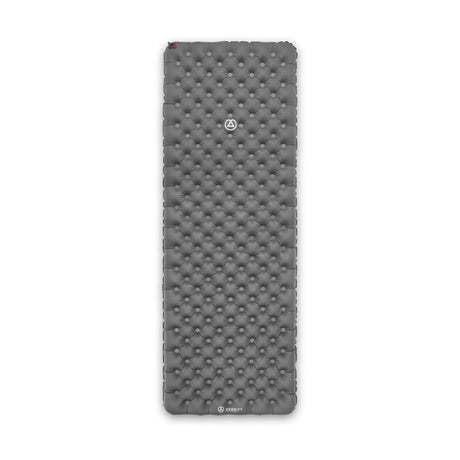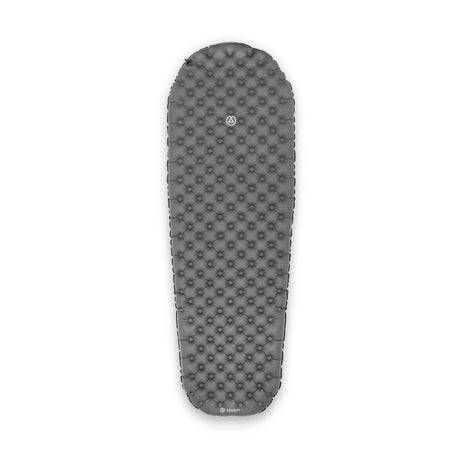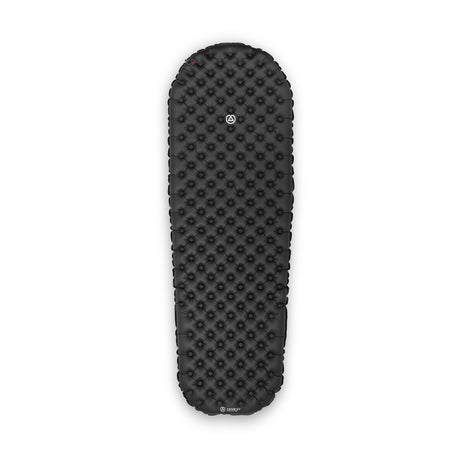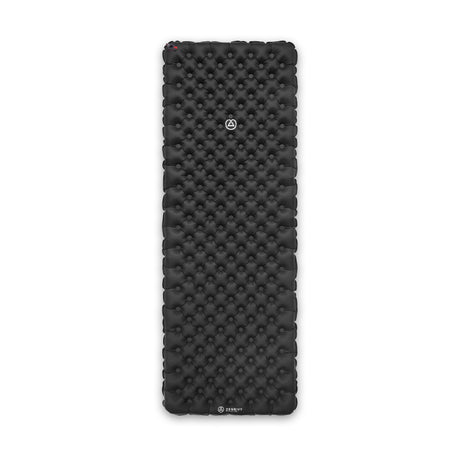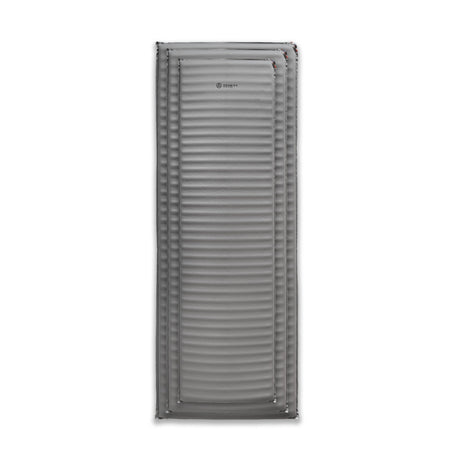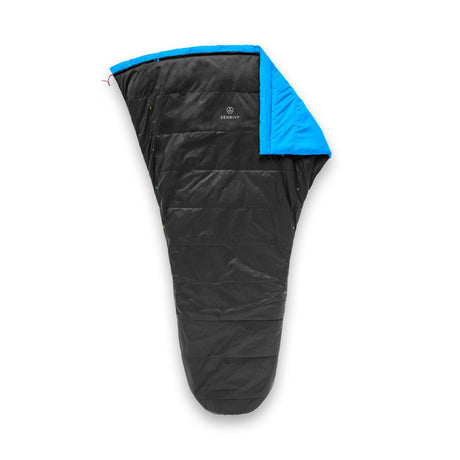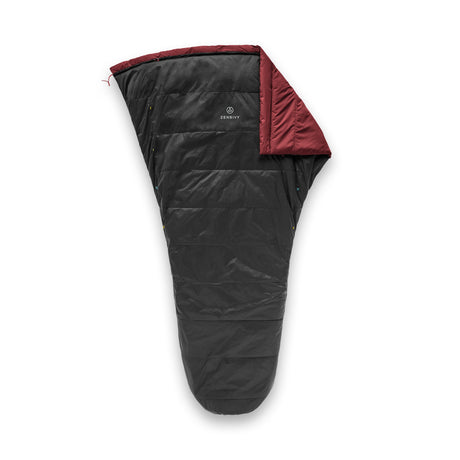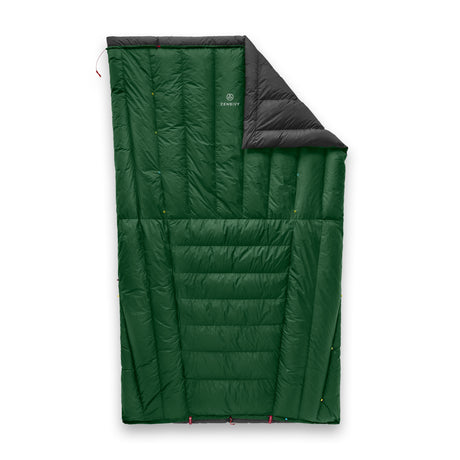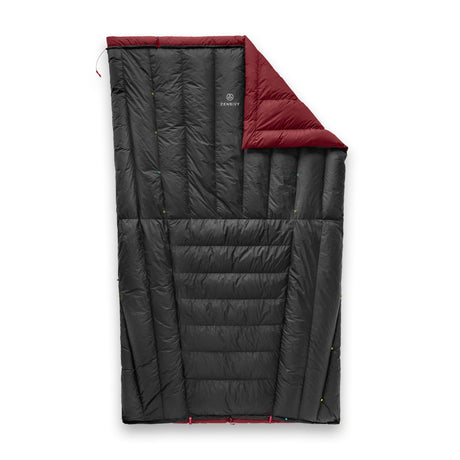Short Story
Why we are changing:
Lab-certified EN test results are misleading because the test methods have very wide variances that make them unusable for both product development and comparing the thermal performance of one sleeping bag to another. (More on that below)
What we are doing instead:
We are simply going to give a limit rating and a comfort rating for each of our Beds. These ratings will correlate to the previous EN system. The change will be invisible to our customers, the bags will just no longer be “EN-Rated”. You will also see us eliminating the very misleading specific temperature ratings (aka 23º) and replacing them with a temperature rating based on the measured loft (25º). As they do now, the temperature ratings will assume quilts are paired with the sheet/hood or some other form of equivalent head insulation and an R5 (EN-test matched) insulated mattress.
What this means for you:
All you need to do is simply match the comfort rating of the bag with the lowest temps you think you will actually encounter and pair it with an R5 mattress. Add a down hoodie and even the coldest sleeper will be comfy at the comfort rating; most will be able to push it towards the limit rating or even below. If you know you are someone who is “always cold” or “never warm enough”, it makes a ton of sense to add 10-15 degrees to the comfort rating above. This usually means buying the next warmer bag than recommended. It is also essential to choose a size that is large enough. Larger quilts are always warmer and it is easy to be too-cold in a quilt or bed that is too small.
Longer Story
Let’s start from the beginning: What is an EN rating?
An EN (European Norm) rating is a temperature rating given to sleeping bags that undergo a standardized laboratory mannequin test. This test gives the bag both a Limit Rating (the temperature at which a warmer sleeper will be at their limit of comfort in a condensed position) and a Comfort Rating (the lowest temperature at which a colder sleeper will feel comfortable in a relaxed position). EN protocol was developed so that customers could directly compare a bag from one brand to a bag from another brand.
So what’s the problem?
Through extensive testing, we have determined that the mannequin test itself does not provide ANY usable information that cannot be determined by simply measuring the loft of the insulation with a ruler. Consumers are misled when they presume a mannequin-tested, EN-rated 23º sleeping bag is warmer than a 27º EN-rated bag from the same test fixture. Unfortunately, it just ain't so.
We discovered this problem in 2018 while testing the Zenbivy Light Beds. At first, we noticed that the results of the Light Bed in 2018 did not jive with our expectations based on the original Zenbivy Bed testing in 2016. Then, in an effort to gain more data, we tested numerous different beds which were identical apart from fill amount and noticed outrageous discrepancies in the results from test to test. In one instance, we tested a bag then added 60grams (2 ounces) of down to the same bag and re-tested it, only to get a “lab-certified” result that was 4ºF colder than the same bed with less down...
When we pushed back to the testing lab (Kansas State University), we were told that normal testing variability is +/- 5% and that the actual sampling variability can be even higher. What that means is a bag measured with an EN limit rating of 19ºF may sound really precise. But even with "normal variability" that bag may really be a 15ºF. Or a 22ºF. Or anywhere in between. Not precise.
Plus, in reality, the variability is even higher, making the actual EN test results useless. And we told KSU that, in no uncertain terms. We did some additional testing to compare various test-chambers, all of which indicated a serious problem, but KSU did not seriously pursue our objections.
Then, earlier this year, we received a letter from KSU that was based on complaints from one of their other clients who had un-earthed some of the same problems from the 2018 Zenbivy testing. The conclusion? KSU admitted that, in addition to the normal testing variability, the test results from their mannequin tests have been “drifting” over time, making recent results even less comparable to those from previous years.
So, what does all that mean?
Unfortunately, we cannot trust lab-generated EN ratings beyond using them as a general estimate, and our customers are advised to ignore specific EN ratings when comparing different sleeping bags.
Here’s what we’re doing instead…
We are simply going to keep the elements of the EN system that we like. Specifically:
- Our definitions of “limit” and “comfort” will be the same as before and will closely match those of the EN system.
- We are going to thermally match all of our beds to a mattress with an R-value 5. This is the mattress warmth used in the EN system and it's quite a bit warmer than most of the mattresses marketed as “3-season” from many brands. Even so, our testing clearly shows us that R5 is the best match for bags with limit ratings between 10º and 35º. The reality is that these are true “3-season” bags with comfort ratings between 20º and 45º.
When determining ratings going forward, we will simply “loft match” to the already-known correlation between loft, measured thermal performance, and EN ratings. So while we won’t actually EN test them, they will be built as though we were still using the system. As we have always done, we will develop new products by measuring the actual loft of each chamber to match our known target and rate the bag there. It is simpler, way less expensive, and ironically far more accurate and reliable than mannequin testing labs.



